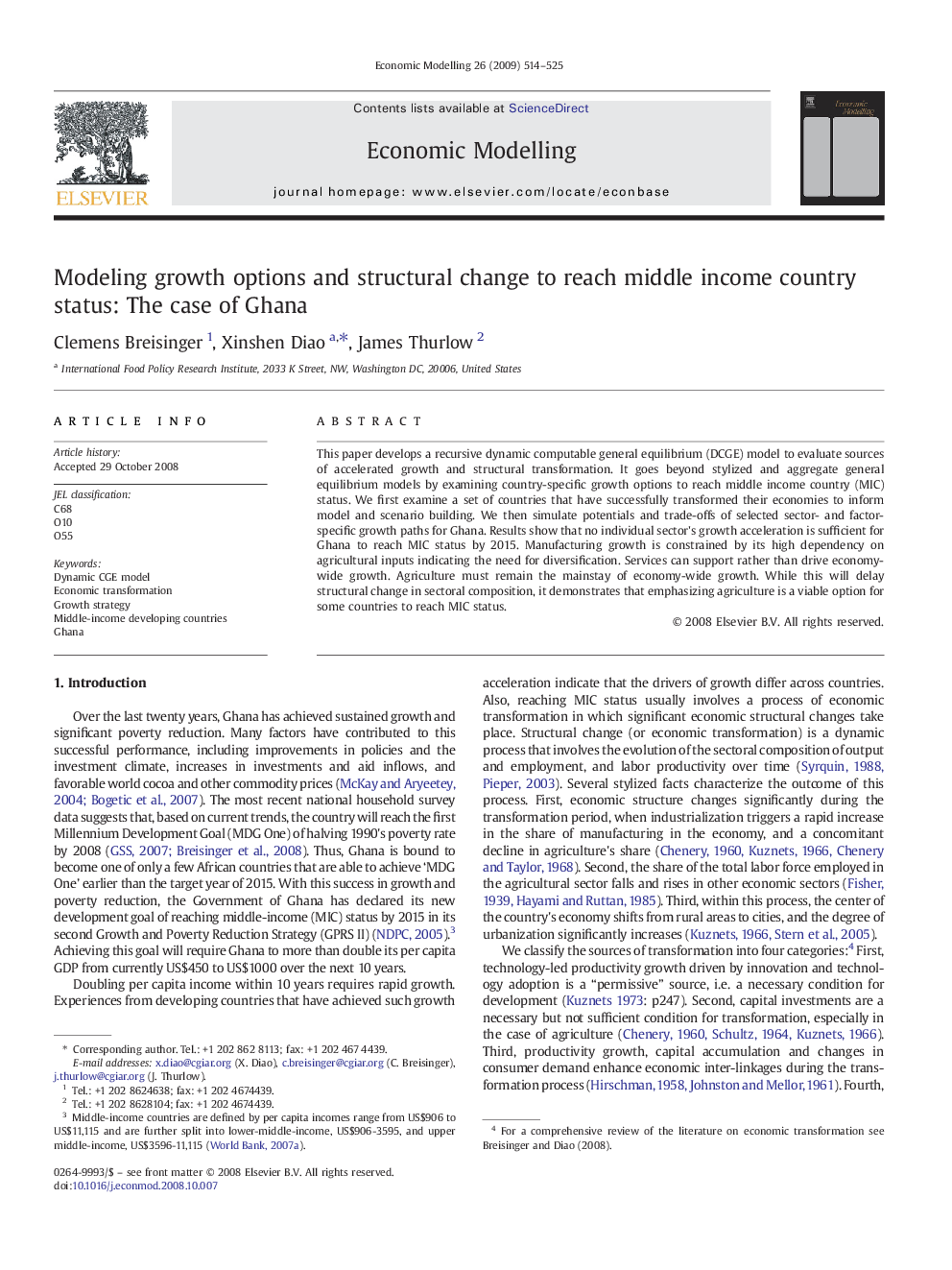| Article ID | Journal | Published Year | Pages | File Type |
|---|---|---|---|---|
| 5055356 | Economic Modelling | 2009 | 12 Pages |
Abstract
This paper develops a recursive dynamic computable general equilibrium (DCGE) model to evaluate sources of accelerated growth and structural transformation. It goes beyond stylized and aggregate general equilibrium models by examining country-specific growth options to reach middle income country (MIC) status. We first examine a set of countries that have successfully transformed their economies to inform model and scenario building. We then simulate potentials and trade-offs of selected sector- and factor-specific growth paths for Ghana. Results show that no individual sector's growth acceleration is sufficient for Ghana to reach MIC status by 2015. Manufacturing growth is constrained by its high dependency on agricultural inputs indicating the need for diversification. Services can support rather than drive economy-wide growth. Agriculture must remain the mainstay of economy-wide growth. While this will delay structural change in sectoral composition, it demonstrates that emphasizing agriculture is a viable option for some countries to reach MIC status.
Related Topics
Social Sciences and Humanities
Economics, Econometrics and Finance
Economics and Econometrics
Authors
Clemens Breisinger, Xinshen Diao, James Thurlow,
